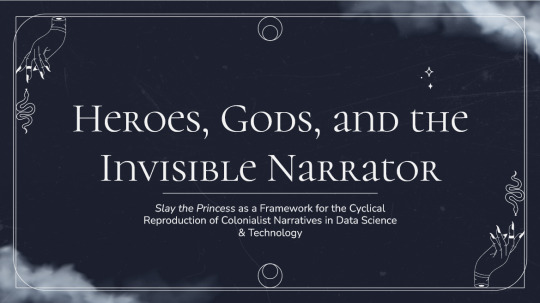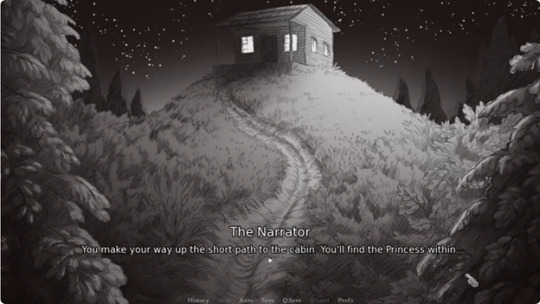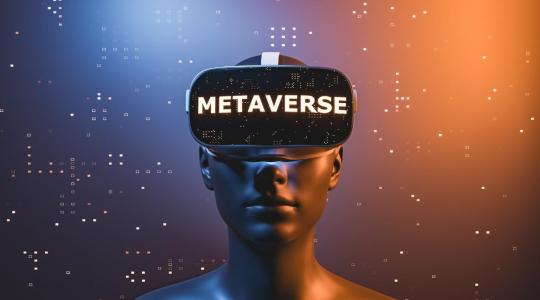#Applied Data Science with AI
Explore tagged Tumblr posts
Text
Applied Data Science with AI for Real-World Solutions
In today's data-operated world, organizations are constantly looking for professionals who can analyze large amounts of information and provide meaningful insights. This has made a large demand for skilled persons in Applied Data Science and Artificial Intelligence (AI). From healthcare and finance to retail and smart cities, the role of data science and AI is becoming more impressive and omnipresent. If you are looking at your career in the future, it is a strategic step to develop specialization in applied data science and AI. And for aspiring professionals in India, especially located in Tamil Nadu, artificial intelligence courses in Chennai are providing world-class training to make students and working professionals more evenly suited for these in-demand fields. This article suggests how you can increase your career by learning applied data science with AI, the growing job market, the skills you need, and why Chennai is emerging as a hub for top-AI education.

What is Applied Data Science with AI?
Applied data science refers to the practical application of data analysis, statistics and programming to solve the problems of the real world. When combined with artificial intelligence, it becomes a powerful toolkit that is able to predict the results, automate processes and make informed decisions.
Key aspects include:
Data collection & preprocessing
Exploratory data analysis (EDA)
Machine learning & deep learning
Natural language processing (NLP)
Computer vision
Big data handling & visualization
Applied data science focuses not just on theoretical models but on applying these techniques to live business cases—making it highly relevant in industry settings.
Why Is Applied Data Science with AI in High Demand?
Data is the New Oil
Organizations across the globe generate petabytes of data every day. With the help of AI, this data is being turned into insights that drive decision-making, improve efficiency, and create new business models.
High-Paying Jobs
Data scientists and AI engineers are among the highest-paid professionals in tech. According to LinkedIn and Glassdoor, AI-related roles have an average salary range of ₹10–25 lakhs per annum in India.
Universal Application
Every sector—from education and agriculture to banking and logistics—is leveraging AI. This cross-industry application means job opportunities are not restricted to just tech companies.
Career Growth & Stability
AI and data science are not just trends—they are the foundation of future innovation. Professionals in this field enjoy long-term career stability and exciting growth prospects.
Technical Skills
Programming languages: Python, R
Data manipulation: Pandas, NumPy
Machine learning: Scikit-learn, TensorFlow, PyTorch
Data visualization: Matplotlib, Seaborn, Power BI
SQL and NoSQL databases
Big data tools: Hadoop, Spark
Cloud platforms: AWS, Azure, Google Cloud
Soft Skills
Problem-solving and critical thinking
Communication and storytelling with data
Collaboration and teamwork
Business acumen and domain knowledge
Why Choose Artificial Intelligence Courses in Chennai?

Chennai is rapidly emerging as a leading tech education hub in South India. Here's why pursuing artificial intelligence courses in Chennai is a great choice:
High-Quality Institutes
Top institutes in Chennai like IIT Madras, Anna University, and many private training centers offer advanced AI and data science programs.
Experienced Mentors
Courses are taught by industry professionals and researchers with real-world experience, making learning more practical and career-focused.
Industry Connections
Chennai has a strong IT ecosystem with major companies like TCS, Infosys, Cognizant, and Zoho. Students often benefit from internships, workshops, and job placements.
Affordable Learning
Compared to many other metro cities, Chennai offers cost-effective training options without compromising on quality.
Growing Tech Community
The city hosts regular tech meetups, hackathons, and AI summits that provide hands-on exposure and networking opportunities.
Best AI & Data Science Institutes in Chennai
Some popular institutions and academies offering AI and data science programs in Chennai include:
IIT Madras – PGP in Data Science and AI
Great Learning – Applied AI & Machine Learning Program
GUVI – Data Science Career Program
Skill Lync – Data Science and Machine Learning Course
UpGrad (in partnership with IIIT-B) – Online programs with Chennai-based meetups
Simplilearn & Edureka – Online platforms with Chennai-based cohorts
Make sure to evaluate these based on course content, mentorship, hands-on projects, placement support, and student reviews.
What to Expect in an Applied Data Science Course
Most artificial intelligence courses in Chennai span 6–12 months and follow a practical, project-based learning approach. Here’s a typical structure:
Introduction to AI & Data Science
Programming Foundations (Python/R)
Statistics and Probability
Data Wrangling and Cleaning
Machine Learning Algorithms
Deep Learning & Neural Networks
Model Deployment and Cloud Computing
Capstone Projects and Portfolio Building
Career Support and Resume Building
Internship or Real-World Project
Courses may offer certifications, which are beneficial when applying for jobs, especially as a fresher.
How to Choose the Right Course
Not all AI courses are created equal. Here’s how to pick the right one for your career:
Check the Curriculum – Does it cover both foundational and advanced topics?
Project-Based Learning – Hands-on projects show employers your skills.
Industry Recognition – Certifications from reputed institutes carry more weight.
Placement Assistance – Look for courses that help with job interviews, resumes, and referrals.
Mentorship Access – Personalized guidance can fast-track your learning.
Success Stories from Chennai
Many professionals in Chennai have transitioned from traditional IT roles to AI and data science careers. For example:
Anusha R, a software tester, completed a 6-month AI course and now works as a data scientist at Zoho.
Vikram M, an engineering graduate, landed an AI role at TCS after upskilling via online programs and local workshops.
Preethi D, a marketing analyst, leveraged AI courses to transition into a machine learning engineer role within a year.
These success stories reflect the growing demand and accessibility of career transformation through AI education in Chennai.

The Future of AI and Data Science Careers
Future data looks bright for science and AI professionals. With the rapid speed of digital change, companies are making heavy investments in automation, future state analysis and intelligent systems. According to the report of Nasscom and World Economic Forum, the roles in AI are expected to increase by 35% annually. Skill in AI will soon be as necessary as computer literacy in the early 2000s. Those who embrace the shift quickly, they will stand out in the job market and will be at the forefront of innovation.
The field of applied data science with AI is not just a discussion - it is a transformative career path that empowers professionals to create meaningful effects in business and society. By enrollment in quality artificial intelligence courses in Chennai, you get the equipment, skills and mentarships required to elevate your career to the next level. Whether you are a student, a working professional, or a career switch plan, now is the right time to dive into the world of data science and AI. Opportunities are huge, roles are attractive, and the future is intelligent.
0 notes
Text
Bridgetown Research Secures $19M Series A to Revolutionize AI-Driven Business Research
New Post has been published on https://thedigitalinsider.com/bridgetown-research-secures-19m-series-a-to-revolutionize-ai-driven-business-research/
Bridgetown Research Secures $19M Series A to Revolutionize AI-Driven Business Research


Strategic business decisions have long been constrained by time and resources, but Bridgetown Research is changing the game. The AI decision science startup today announced a $19 million Series A funding round led by Lightspeed and Accel, with participation from a leading research university. This capital will fuel Bridgetown’s mission to deploy AI-powered business research agents capable of transforming how private equity firms, consulting teams, and corporate strategists analyze markets and make high-stakes decisions.
AI-Powered Research Agents: A Paradigm Shift
Traditional business research is slow, expensive, and often constrained by the availability of experts who have limited exposure to repeated cases. Bridgetown Research aims to change this by automating fundamental research and analysis through AI-driven agents. These agents autonomously gather, analyze, and synthesize primary and secondary data at a scale and speed previously unimaginable.
A standout feature of Bridgetown’s AI suite is its voice bots—sophisticated AI agents trained to recruit and interview industry experts. By collecting primary data—direct insights from seasoned professionals—these agents provide businesses with proprietary intelligence that goes beyond publicly available information. The AI agents also leverage alternative data sources, including web-crawled insights and structured datasets from industry partners, to create a comprehensive analytical framework.
A Visionary Team at the Helm
Bridgetown Research was founded by Harsh Sahai, a former Amazon machine learning leader and McKinsey & Co. strategist who recognized that most business analyses are repetitive and thus ripe for automation. His team consists of experts from McKinsey, Bain, Amazon, and top technology startups, bringing together deep experience in AI, strategy consulting, and data science.
Harsh Sahai, CEO & Founder of Bridgetown Research, “We are excited to be a catalyst for change. By working with private equity firms, management consultants, and corporate teams, we are helping them make strategic decisions faster and more effectively. This, in turn, drives demand for advisory and information services, creating a powerful network effect. For every $1 we generate, we enable over $10 in advisory and information services revenue—we’re building an ecosystem where everyone thrives.”
Beyond Standard AI: Structuring Business Intelligence
Unlike many AI tools that merely search and summarize information using large language models (LLMs), Bridgetown Research’s AI agents go much further. Business decisions often require a combination of proprietary intelligence, structured market frameworks, and repeatable methodologies—something Harsh Sahai refers to as ontologies. These structured frameworks allow businesses to systematically evaluate markets, competitors, and opportunities, ensuring that decision-making is not only fast but also auditable and repeatable.
Harsh Sahai, “Bridgetown Research is the only AI-driven company using agents to gather primary data and systematically extract patterns to generate original insights.”
Market Adoption & Early Success
Bridgetown Research initially focused on private equity deal screening and diligence, a high-value use case where speed and accuracy are critical. Today, top-tier PE and VC firms use Bridgetown’s AI agents to screen investment opportunities in just 24 hours—compared to the weeks it would traditionally take. By eliminating the bottleneck of manual research, these firms can focus on decision-making rather than just gathering data.
Beyond investing, Bridgetown’s AI research agents are revolutionizing other business applications. For corporate clients, its voice-of-customer surveys enable companies to speak with hundreds of respondents simultaneously, delivering insights within days instead of months. This level of efficiency is unheard of in traditional market research, making Bridgetown an indispensable tool for decision-makers.
Backing from Lightspeed and Accel
Venture firms Lightspeed and Accel see immense potential in Bridgetown’s AI-driven approach.
Anagh Prasad, Investor at Accel, “AI is causing widespread disruptions across enterprise functions, and Bridgetown Research is at the forefront of this transformation. Executives using Bridgetown’s platform describe it as having a team of top-tier consultants at their fingertips. We are excited to partner with Harsh and the team as they define a new category of applied AI.”
Ishaan Preet Singh, Investor at Lightspeed, “Strategic decisions define a company’s trajectory. The research and analysis behind these decisions have historically been slow and fragmented. Bridgetown Research is changing that—offering executives and investors an order of magnitude more information, at a pace that was once impossible. This is just the beginning.”
Future Plans: Scaling AI-Driven Decision Science
As global markets become more complex, the demand for high-quality, fast, and cost-effective decision intelligence continues to rise. With this funding, Bridgetown Research plans to expand the capabilities of its AI agents to cover a broader range of industries and business problems. The company will also strengthen its partnerships with domain-specific intelligence providers, further enhancing the quality of insights available to its clients.
#adoption#agents#ai#AI AGENTS#AI research#AI Research Agents#ai tools#AI-powered#AI-powered business#Amazon#amp#analyses#Analysis#applications#applied AI#approach#automation#bots#Bridgetown Research#Building#Business#business applications#catalyst#CEO#change#Companies#comprehensive#consulting#data#data science
0 notes
Text
Aretove Technologies: Your Data Whispers, We Make it Roar

Lost in a sea of data? Aretove Technologies unlocks its hidden power. We harness Predictive Analytics, Data Science, Applied AI, and Business Intelligence to transform your whispers into thunderous insights. Boost efficiency, anticipate risks, and personalize experiences. With Aretove, your data isn't just noise, it's your competitive edge. Make it roar.
0 notes
Text
A Simple Guide to Understand the apply() Functions in R
Hey LinkedIn network, I just came across this fantastic blog post on understanding the apply() functions in R. It provides a comprehensive overview of the apply family of functions in R, including apply(), lapply(), sapply(), and tapply(). If you've ever wondered how to efficiently apply a specified function to all the elements of a row or column in a dataset, or how to apply a function to each element of a list, then this article is a must-read for you. You can check out the full post here: [A Simple Guide to Understand the apply() Functions in R](https://ift.tt/zJiVTpo) Happy reading and happy coding! #Rprogramming #datascience #programming #coding List of Useful Links: AI Scrum Bot - ask about AI scrum and agile Our Telegram @itinai Twitter - @itinaicom
#itinai.com#AI#News#A Simple Guide to Understand the apply() Functions in R#AI News#AI tools#Gustavo Santos#Innovation#itinai#LLM#Productivity#Towards Data Science - Medium A Simple Guide to Understand the apply() Functions in R
0 notes
Text
Americans, our democracy is under threat.

Do you reject fascism and oppose the Trump-Musk coup? Want to do something, but aren’t sure what you can do to make a difference? Keep reading for ways big and small you can fight back:
Attend a Protest New to protesting? Here’s a primer for first-time protesters and a schedule of upcoming national days of action:
Mar 1st and ongoing (Tesla Takedown) Website | Find an event
Mar 4th (50501: 50 protests, 50 states) Website | Find an event
Mar 7th (Stand up for Science) Website | Find an event
Mar 8th (Women’s March) Website | Find an event
Search for future protests at /r/ProtestFinderUSA and join the mailing list of grassroots organizations like Indivisible to be alerted to future actions.
Put Pressure on Congress Want your elected officials to stand up to Trump-Musk and push back against the unconstitutional executive orders, disastrous DOGE cuts, and illegal funding freezes? Already calling your Reps and Senators daily using 5calls.org?
Then it’s time to escalate to in-person action. Visit their websites, join their mailing lists, follow their socials, and call their offices to find out when the next local event will be and make your voice heard.
Applying pressure to congress works, and we are already seeing the results of constituent push back. House Democrats recently voted as a unified block against the Trump-sponsored billionaire tax cuts, with members breaking maternity leave and leaving the hospital to fly back to Washington just to cast their votes. And on the Republican side, negative town hall blowback has the GOP running scared.
If your congressperson is hiding from you, stage a protest event and put their cowardice on blast. For more information on how to implement these tactics, see the Indivisible congressional recess toolkit.
If your congressperson is already fighting the good fight, then make sure to thank them and provide encouragement to continue opposing the budget cuts. Courage is contagious, and vocal public support will help spur congress to fight that much harder.
And finally, regardless of where you live, you can sign up to phone bank and reach out to voters in red congressional districts.
Get Out the Vote Did you know there are Special Elections as soon as April 1st that could flip control of the House back to Democrats? We simply cannot wait for the 2026 midterms, we must take action now! You can help get out the vote for Gay Valimont (FL-1), Joshua Weil (FL-6), and Blake Gendebien (NY-21).
In addition, the Muskrat is spending millions to buy the Wisconsin Supreme Court. Phone bank or write letters to keep a MAGA extremist off the high court and protect Wisconsin elections from future gerrymandering.
Fight the Broligarchy If you own TSLA stock, or *gasp* an actual Tesla vehicle, drop it like a scorching case of herpes, then join the picket line at your nearest Tesla showroom.
On socials, delete your Nazi-infested X and Meta (Facebook, IG, Threads) accounts and join the open source BlueSky. If you must remain on Meta, at minimum change your account settings so Fuckerberg can’t profit from your data.
Stop using Google search/Chrome and install privacy-focused alternatives like DuckDuckGo or Firefox. As a bonus, in the DuckDuckGo browser you can permanently hide AI garbage from your search results.
Show your monetary support for companies that have renewed their commitment to DEI programs (like Costco and Apple) and boycott those who have not (like Target and Amazon). Also look up how other corporations score on the democracy scale and adjust your spending accordingly.
And last, but not least, pledge to join the General Strike!
Stay Informed Corporate media has capitulated to Trump. From the cancellation of minority-hosted shows on MSNBC to the Bezos takeover of the Washington Post editorial pages, MSM cannot be relied upon to provide unbiased coverage of the Trump-Musk regime.
Support independent journalists and media and follow AltGov accounts on Bluesky to stay informed as to what is actually going on in Washington.
Get to Know your Community Authoritarians want you to feel helpless and isolated because they know we the people vastly outnumber them. Get to know your neighbors and join a group/team/club - anything that gets you interacting with your local community whether it is political or not.
Under Trump-Musk, federal programs like SNAP, Medicaid, Medicare, and even Social Security are in danger. We will need to increasingly rely on our own communities to have our backs. Visit mutualaidhub.org to locate resources and learn how to start your own network.
And finally, remember that resistance is a marathon, not a sprint. So be sure to stop doomscrolling and simply enjoy life as AOC reminds us:

567 notes
·
View notes
Text
Ho bisogno del vostro aiuto, quindi vi chiedo un cortese reblog, e se volete, aiutarmi su altre piattaforme al di fuori di Tumblr, dove ve pare, tutto il materiale riportato qui è pubblico. Please, I need your help to "spread the word", so thank you in advance for your kind reblog, even on other platforms, you can share with no restrictions.
Hi,
SAP, my company, is searching for students that are willing to get a Bachelor in Computer Science, called VT/STAR, Vocational Training. I'm adding here all the details and the links, but let me recap why it's a great thing for you.
The Bachelor is a 3-years program and you get paid while you study!!! First year, 1.300 EUR per month, then 1.450, and finally 1.600 EUR.
You have full access to all SAP facilities in the Campus, like the canteen, the sport gym and many other social places, with no costs on your side.
The Vocational Program is intended to hire young people, so once you complete your Bachelor, you pass the exams, the chances are quite high to be hired in SAP and start your career there.
The whole program is paid 100% by SAP. In detail:
this is not for German students, this is for any EU non-German student that is willing to start a Bachelor program intended to hire a future developer/data scientist/AI expert. For any EU citizen, this Bachelor program has no costs on your side, you just come and start.
for any non-EU citizen, you're charged for a one-time-only 1.500 EUR entry fee, and that's it.
Just to be transparent, the company does not cover any costs due to the relocation to Walldorf, Germany, those are on you.
The Bachelor start on September, 1st, every year, you need to go through an interview and pass an entry test, there's no deadline for your application, but if you apply once the program has already started and you pass it, you'll be in the line for the next year automatically.
You can read all the details in the link below, I'm just rephrasing two of the points you'll read there.
Excellent written and spoken English => no, you just need the English required to study a STEM discipline, we don't need any future Shakespeare, you don't need to bring any English certification, you'll prove your knowledge at the interview, that's it. No German language is required!
Programming skills in at least one programming language => you don't need to be a senior, you don't need to be an expert, you just need to have some basic knowledge about what coding means, what is OOP, and some other basic computer programming concepts. If you have ever written a simple program on your own, I mean, something on the educational level, chances are that you can fit the program.


Here you can find all the information you need:
And here you can apply for it:
In case you need any other detail or you have more questions, please write me a message.
Good luck! :)
56 notes
·
View notes
Text
Heroes, Gods, and the Invisible Narrator

Slay the Princess as a Framework for the Cyclical Reproduction of Colonialist Narratives in Data Science & Technology
An Essay by FireflySummers
All images are captioned.
Content Warnings: Body Horror, Discussion of Racism and Colonialism
Spoilers for Slay the Princess (2023) by @abby-howard and Black Tabby Games.
If you enjoy this article, consider reading my guide to arguing against the use of AI image generators or the academic article it's based on.

Introduction: The Hero and the Princess
You're on a path in the woods, and at the end of that path is a cabin. And in the basement of that cabin is a Princess. You're here to slay her. If you don't, it will be the end of the world.

Slay the Princess is a 2023 indie horror game by Abby Howard and published through Black Tabby Games, with voice talent by Jonathan Sims (yes, that one) and Nichole Goodnight.
The game starts with you dropped without context in the middle of the woods. But that’s alright. The Narrator is here to guide you. You are the hero, you have your weapon, and you have a monster to slay.


From there, it's the player's choice exactly how to proceed--whether that be listening to the voice of the narrator, or attempting to subvert him. You can kill her as instructed, or sit and chat, or even free her from her chains.
It doesn't matter.
Regardless of whether you are successful in your goal, you will inevitably (and often quite violently) die.
And then...
You are once again on a path in the woods.
The cycle repeats itself, the narrator seemingly none the wiser. But the woods are different, and so is the cabin. You're different, and worse... so is she.
Based on your actions in the previous loop, the princess has... changed. Distorted.



Had you attempted a daring rescue, she is now a damsel--sweet and submissive and already fallen in love with you.
Had you previously betrayed her, she has warped into something malicious and sinister, ready to repay your kindness in full.
But once again, it doesn't matter.
Because the no matter what you choose, no matter how the world around you contorts under the weight of repeated loops, it will always be you and the princess.


Why? Because that’s how the story goes.
So says the narrator.
So now that we've got that out of the way, let's talk about data.

Chapter I: Echoes and Shattered Mirrors
The problem with "data" is that we don't really think too much about it anymore. Or, at least, we think about it in the same abstract way we think about "a billion people." It's gotten so big, so seemingly impersonal that it's easy to forget that contemporary concept of "data" in the west is a phenomenon only a couple centuries old [1].
This modern conception of the word describes the ways that we translate the world into words and numbers that can then be categorized and analyzed. As such, data has a lot of practical uses, whether that be putting a rover on mars or tracking the outbreak of a viral contagion. However, this functionality makes it all too easy to overlook the fact that data itself is not neutral. It is gathered by people, sorted into categories designed by people, and interpreted by people. At every step, there are people involved, such that contemporary technology is embedded with systemic injustices, and not always by accident.
The reproduction of systems of oppression are most obvious from the margins. In his 2019 article As If, Ramon Amaro describes the Aspire Mirror (2016): a speculative design project by by Joy Buolamwini that contended with the fact that the standard facial recognition algorithm library had been trained almost exclusively on white faces. The simplest solution was to artificially lighten darker skin-tones for the algorithm to recognize, which Amaro uses to illustrate the way that technology is developed with an assumption of whiteness [2].
This observation applies across other intersections as well, such as trans identity [3], which has been colloquially dubbed "The Misgendering Machine" [4] for its insistence on classifying people into a strict gender binary based only on physical appearance.



This has also popped up in my own research, brought to my attention by the artist @b4kuch1n who has spoken at length with me about the connection between their Vietnamese heritage and the clothing they design in their illustrative work [5]. They call out AI image generators for reinforcing colonialism by stripping art with significant personal and cultural meaning of their context and history, using them to produce a poor facsimile to sell to the highest bidder.
All this describes an iterative cycle which defines normalcy through a white, western lens, with a limited range of acceptable diversity. Within this cycle, AI feeds on data gathered under colonialist ideology, then producing an artifact that reinforces existing systemic bias. When this data is, in turn, once again fed to the machine, that bias becomes all the more severe, and the range of acceptability narrower [2, 6].

Luciana Parisi and Denise Ferreira da Silva touch on a similar point in their article Black Feminist Tools, Critique, and Techno-poethics but on a much broader scale. They call up the Greek myth of Prometheus, who was punished by the gods for his hubris for stealing fire to give to humanity. Parisi and Ferreira da Silva point to how this, and other parts of the “Western Cosmology” map to humanity’s relationship with technology [7].
However, while this story seems to celebrate the technological advancement of humanity, there are darker colonialist undertones. It frames the world in terms of the gods and man, the oppressor and the oppressed; but it provides no other way of being. So instead the story repeats itself, with so-called progress an inextricable part of these two classes of being. This doesn’t bode well for visions of the future, then–because surely, eventually, the oppressed will one day be the machines [7, 8].
It’s… depressing. But it’s only really true, if you assume that that’s the only way the story could go.
“Stories don't care who takes part in them. All that matters is that the story gets told, that the story repeats. Or, if you prefer to think of it like this: stories are a parasitical life form, warping lives in the service only of the story itself.” ― Terry Pratchett, Witches Abroad

Chapter II: The Invisible Narrator
So why does the narrator get to call the shots on how a story might go? Who even are they? What do they want? How much power do they actually have?
With the exception of first person writing, a lot of the time the narrator is invisible. This is different from an unreliable narrator. With an unreliable narrator, at some point the audience becomes aware of their presence in order for the story to function as intended. An invisible narrator is never meant to be seen.

In Slay the Princess, the narrator would very much like to be invisible. Instead, he has been dragged out into the light, because you (and the inner voices you pick up along the way), are starting to argue with him. And he doesn’t like it.
Despite his claims that the princess will lie and cheat in order to escape, as the game progresses it’s clear that the narrator is every bit as manipulative–if not moreso, because he actually knows what’s going on. And, if the player tries to diverge from the path that he’s set before them, the correct path, then it rapidly becomes clear that he, at least to start, has the power to force that correct path.
While this is very much a narrative device, the act of calling attention to the narrator is important beyond that context.

The Hero’s Journey is the true monomyth, something to which all stories can be reduced. It doesn’t matter that the author, Joseph Campbell, was a raging misogynist whose framework flattened cultures and stories to fit a western lens [9, 10]. It was used in Star Wars, so clearly it’s a universal framework.



The metaverse will soon replace the real world and crypto is the future of currency! Never mind that the organizations pushing it are suspiciously pyramid shaped. Get on board or be left behind.
Generative AI is pushed as the next big thing. The harms it inflicts on creatives and the harmful stereotypes it perpetuates are just bugs in the system. Never mind that the evangelists for this technology speak over the concerns of marginalized people [5]. That’s a skill issue, you gotta keep up.
Computers will eventually, likely soon, advance so far as to replace humans altogether. The robot uprising is on the horizon [8].
Who perpetuates these stories? What do they have to gain?
Why is the only story for the future replications of unjust systems of power? Why must the hero always slay the monster?
Because so says the narrator. And so long as they are invisible, it is simple to assume that this is simply the way things are.

Chapter III: The End...?
This is the part where Slay the Princess starts feeling like a stretch, but I’ve already killed the horse so I might as well beat it until the end too.
Because what is the end result here?
According to the game… collapse. A recursive story whose biases narrow the scope of each iteration ultimately collapses in on itself. The princess becomes so sharp that she is nothing but blades to eviscerate you. The princess becomes so perfect a damsel that she is a caricature of the trope. The story whittles itself away to nothing. And then the cycle begins anew.

There’s no climactic final battle with the narrator. He created this box, set things in motion, but he is beyond the player’s reach to confront directly. The only way out is to become aware of the box itself, and the agenda of the narrator. It requires acknowledgement of the artificiality of the roles thrust upon you and the Princess, the false dichotomy of hero or villain.
Slay the Princess doesn’t actually provide an answer to what lies outside of the box, merely acknowledges it as a limit that can be overcome.

With regards to the less fanciful narratives that comprise our day-to-day lives, it’s difficult to see the boxes and dichotomies we’ve been forced into, let alone what might be beyond them. But if the limit placed is that there are no stories that can exist outside of capitalism, outside of colonialism, outside of rigid hierarchies and oppressive structures, then that limit can be broken [12].

Denouement: Doomed by the Narrative
Video games are an interesting artistic medium, due to their inherent interactivity. The commonly accepted mechanics of the medium, such as flavor text that provides in-game information and commentary, are an excellent example of an invisible narrator. Branching dialogue trees and multiple endings can help obscure this further, giving the player a sense of genuine agency… which provides an interesting opportunity to drag an invisible narrator into the light.
There are a number of games that have explored the power differential between the narrator and the player (The Stanley Parable, Little Misfortune, Undertale, Buddy.io, OneShot, etc…)
However, Slay the Princess works well here because it not only emphasizes the artificial limitations that the narrator sets on a story, but the way that these stories recursively loop in on themselves, reinforcing the fears and biases of previous iterations.
Critical data theory probably had nothing to do with the game’s development (Abby Howard if you're reading this, lmk). However, it works as a surprisingly cohesive framework for illustrating the ways that we can become ensnared by a narrative, and the importance of knowing who, exactly, is narrating the story. Although it is difficult or impossible to conceptualize what might exist beyond the artificial limits placed by even a well-intentioned narrator, calling attention to them and the box they’ve constructed is the first step in breaking out of this cycle.
“You can't go around building a better world for people. Only people can build a better world for people. Otherwise it's just a cage.” ― Terry Pratchett, Witches Abroad

Epilogue
If you've read this far, thank you for your time! This was an adaptation of my final presentation for a Critical Data Studies course. Truthfully, this course posed quite a challenge--I found the readings of philosophers such as Kant, Adorno, Foucault, etc... difficult to parse. More contemporary scholars were significantly more accessible. My only hope is that I haven't gravely misinterpreted the scholars and researchers whose work inspired this piece.
I honestly feel like this might have worked best as a video essay, but I don't know how to do those, and don't have the time to learn or the money to outsource.
Slay the Princess is available for purchase now on Steam.
Screencaps from ManBadassHero Let's Plays: [Part 1] [Part 2] [Part 3] [Part 4] [Part 5] [Part 6]
Post Dividers by @cafekitsune
Citations:
Rosenberg, D. (2018). Data as word. Historical Studies in the Natural Sciences, 48(5), 557-567.
Amaro, Ramon. (2019). As If. e-flux Architecture. Becoming Digital. https://www.e-flux.com/architecture/becoming-digital/248073/as-if/
What Ethical AI Really Means by PhilosophyTube
Keyes, O. (2018). The misgendering machines: Trans/HCI implications of automatic gender recognition. Proceedings of the ACM on human-computer interaction, 2(CSCW), 1-22.
Allred, A.M., Aragon, C. (2023). Art in the Machine: Value Misalignment and AI “Art”. In: Luo, Y. (eds) Cooperative Design, Visualization, and Engineering. CDVE 2023. Lecture Notes in Computer Science, vol 14166. Springer, Cham. https://doi.org/10.1007/978-3-031-43815-8_4
Amaro, R. (2019). Artificial Intelligence: warped, colorful forms and their unclear geometries.
Parisisi, L., Ferreira da Silva, D. Black Feminist Tools, Critique, and Techno-poethics. e-flux. Issue #123. https://www.e-flux.com/journal/123/436929/black-feminist-tools-critique-and-techno-poethics/
AI - Our Shiny New Robot King | Sophie from Mars by Sophie From Mars
Joseph Campbell and the Myth of the Monomyth | Part 1 by Maggie Mae Fish
Joseph Campbell and the N@zis | Part 2 by Maggie Mae Fish
How Barbie Cis-ified the Matrix by Jessie Gender
#slay the princess#stp spoilers#stp#stp princess#abby howard#black tabby games#academics#critical data studies#computer science#technology#hci#my academics#my writing#long post
245 notes
·
View notes
Text
I feel like people don't know my personal history with Machine Learning.
Yes, Machine Learning. What we called it before the marketing folks started calling it "AI".
I studied Graphic Design at university, with a minor in Computer Science. There was no ChatGPT, there was no Stable Diffusion. What there was were primitive Generative Adversarial Networks, or GANs.
I went to one of the head researchers with a proposal; an improvement to a model out of Waseda University that I had thought up. A GAN that could take in a sketch as an input, and output an inked drawing. The idea was to create a new tool for artists to go from sketchy lines to clean linework by applying a filter. The hope was amelioration of the sometimes brutal working conditions of inkers and assistants in manga and anime, by giving them new tools. Naive, looking back, yes. But remember, none of this current sturm and drang had occurred yet.
However, we quickly ran into ethics issues.
My job was to create the data set, and we were unable to come up with a way to get the data we needed, because obviously we can't just throw in a bunch of artists work without permission.
So the project stalled. We couldn't figure out how to license a dataset specific, and large enough.
Then the capitalists who saw a buck to be made independently decided fuck the ethics, we will do it anyway. And they won the arms race we didn't know we were in.
I cared about Machine Learning before any of y'all did. I had informed opinions on the state of the art, before there was any cultural motion to it to react to.
So yeah. There were people trying to do this ethically. I was one of them. We lost to the people who didn't give a shit.
18 notes
·
View notes
Note
The thing about generative AI is that the technology is super useful for recognizing patterns and has been used by scientists for things like detecting cancer cells and other amazing breakthroughs in science. However this technology is smart, yes, but only when it comes to recognizing patterns. In reality, what it can't fully comprehend is creative works due to the widely different patterns in each work. For example, artists who draw realism still have vastly different styles. Another example outside of style being lighting. It can recognize that pieces use lighting but because it varies so much with each piece, it doesn't fully understand how to apply it. The same applies to writing and other creative practices, they're all too different.
TLRD; Instead of developing new technology or expanding in existing technology to be assistants to creatives (including developing affordable technology for disabled creatives to use) these companies are forcing scientific technology to recognize patterns in something it can't. They're too lazy to sit down and actually teach AI the nuances behind creativity, so they scrape as much data as they can to force it to create something passable.
basically lol
162 notes
·
View notes
Note
fwiw and i have no idea what the artists are doing with it, a lot of the libraries that researchers are currently using to develop deep learning models from scratch are all open source built upon python, i'm sure monsanto has its own proprietary models hand crafted to make life as shitty as possible in the name of profit, but for research there's a lot of available resources library and dataset wise in related fields. It's not my area per se but i've learnt enough to get by in potentially applying it to my field within science, and largely the bottleneck in research is that the servers and graphics cards you need to train your models at a reasonable pace are of a size you can usually only get from google or amazon or facebook (although some rich asshole private universities from the US can actually afford the cost of the kind of server you need. But that's a different issue wrt resource availability in research in the global south. Basically: mas plata para la universidad pública la re puta que los parió)
Yes, one great thing about software development is that for every commercially closed thing there are open source versions that do better.
The possibilities for science are enormous. Gigantic. Much of modern science is based on handling huge amounts of data no human can process at once. Specially trained models can be key to things such as complex genetics, especially simulating proteomes. They already have been used there to incredible effect, but custom models are hard to make, I think AIs that can be reconfigured to particular cases might change things in a lot of fields forever.
I am concerned, however, of the overconsumption of electronics this might lead to when everyone wants their pet ChatGPT on their PC, but this isn't a thing that started with AI, electronic waste and planned obsolescence is already wasting countless resources in chips just to feed fashion items like iphones, this is a matter of consumption and making computers be more modular and longer lasting as the tools they are. I've also read that models recently developed in China consume much, much less resources and could potentially be available in common desktop computers, things might change as quickly as in 2 years.
25 notes
·
View notes
Text
The Four Horsemen of the Digital Apocalypse
Blockchain. Artificial Intelligence. Internet of Things. Big Data.
Do these terms sound familiar? You have probably been hearing some or all of them non stop for years. "They are the future. You don't want to be left behind, do you?"
While these topics, particularly crypto and AI, have been the subject of tech hype bubbles and inescapable on social media, there is actually something deeper and weirder going on if you scratch below the surface.
I am getting ready to apply for my PhD in financial technology, and in the academic business studies literature (Which is barely a science, but sometimes in academia you need to wade into the trash can.) any discussion of digital transformation or the process by which companies adopt IT seem to have a very specific idea about the future of technology, and it's always the same list, that list being, blockchain, AI, IoT, and Big Data. Sometimes the list changes with additions and substitutions, like the metaverse, advanced robotics, or gene editing, but there is this pervasive idea that the future of technology is fixed, and the list includes tech that goes from questionable to outright fraudulent, so where is this pervasive idea in the academic literature that has been bleeding into the wider culture coming from? What the hell is going on?
The answer is, it all comes from one guy. That guy is Klaus Schwab, the head of the World Economic Forum. Now there are a lot of conspiracies about the WEF and I don't really care about them, but the basic facts are it is a think tank that lobbies for sustainable capitalist agendas, and they famously hold a meeting every year where billionaires get together and talk about how bad they feel that they are destroying the planet and promise to do better. I am not here to pass judgement on the WEF. I don't buy into any of the conspiracies, there are plenty of real reasons to criticize them, and I am not going into that.
Basically, Schwab wrote a book titled the Fourth Industrial Revolution. In his model, the first three so-called industrial revolutions are:
1. The industrial revolution we all know about. Factories and mass production basically didn't exist before this. Using steam and water power allowed the transition from hand production to mass production, and accelerated the shift towards capitalism.
2. Electrification, allowing for light and machines for more efficient production lines. Phones for instant long distance communication. It allowed for much faster transfer of information and speed of production in factories.
3. Computing. The Space Age. Computing was introduced for industrial applications in the 50s, meaning previously problems that needed a specific machine engineered to solve them could now be solved in software by writing code, and certain problems would have been too big to solve without computing. Legend has it, Turing convinced the UK government to fund the building of the first computer by promising it could run chemical simulations to improve plastic production. Later, the introduction of home computing and the internet drastically affecting people's lives and their ability to access information.
That's fine, I will give him that. To me, they all represent changes in the means of production and the flow of information, but the Fourth Industrial revolution, Schwab argues, is how the technology of the 21st century is going to revolutionize business and capitalism, the way the first three did before. The technology in question being AI, Blockchain, IoT, and Big Data analytics. Buzzword, Buzzword, Buzzword.
The kicker though? Schwab based the Fourth Industrial revolution on a series of meetings he had, and did not construct it with any academic rigor or evidence. The meetings were with "numerous conversations I have had with business, government and civil society leaders, as well as technology pioneers and young people." (P.10 of the book) Despite apparently having two phds so presumably being capable of research, it seems like he just had a bunch of meetings where the techbros of the mid 2010s fed him a bunch of buzzwords, and got overly excited and wrote a book about it. And now, a generation of academics and researchers have uncritically taken that book as read, filled the business studies academic literature with the idea that these technologies are inevitably the future, and now that is permeating into the wider business ecosystem.
There are plenty of criticisms out there about the fourth industrial revolution as an idea, but I will just give the simplest one that I thought immediately as soon as I heard about the idea. How are any of the technologies listed in the fourth industrial revolution categorically different from computing? Are they actually changing the means of production and flow of information to a comparable degree to the previous revolutions, to such an extent as to be considered a new revolution entirely? The previous so called industrial revolutions were all huge paradigm shifts, and I do not see how a few new weird, questionable, and unreliable applications of computing count as a new paradigm shift.
What benefits will these new technologies actually bring? Who will they benefit? Do the researchers know? Does Schwab know? Does anyone know? I certainly don't, and despite reading a bunch of papers that are treating it as the inevitable future, I have not seen them offering any explanation.
There are plenty of other criticisms, and I found a nice summary from ICT Works here, it is a revolutionary view of history, an elite view of history, is based in great man theory, and most importantly, the fourth industrial revolution is a self fulfilling prophecy. One rich asshole wrote a book about some tech he got excited about, and now a generation are trying to build the world around it. The future is not fixed, we do not need to accept these technologies, and I have to believe a better technological world is possible instead of this capitalist infinite growth tech economy as big tech reckons with its midlife crisis, and how to make the internet sustainable as Apple, Google, Microsoft, Amazon, and Facebook, the most monopolistic and despotic tech companies in the world, are running out of new innovations and new markets to monopolize. The reason the big five are jumping on the fourth industrial revolution buzzwords as hard as they are is because they have run out of real, tangible innovations, and therefore run out of potential to grow.
#ai#artificial intelligence#blockchain#cryptocurrency#fourth industrial revolution#tech#technology#enshittification#anti ai#ai bullshit#world economic forum
32 notes
·
View notes
Text
The headline of this article sounds like a classic tale of amatonormativity, but when you actually read the article, the whole thing gives off strong aro vibes, kinda like:
What is this "love" thing, anyway? Does it have a flavor? I must apply science and data analysis to learn more.
#aromantic#valentine's day#amatonormativity#aro#what is love anyway#does anybody love anybody anyway?#I'm gonna have to use this in that aro-themed choose your own adventure book that I didn't get written in time for aro week again this year
109 notes
·
View notes
Text
Regulating artificial intelligence: The bigger picture
New Post has been published on https://thedigitalinsider.com/regulating-artificial-intelligence-the-bigger-picture/
Regulating artificial intelligence: The bigger picture

Artificial intelligence: The impact of hype, economics and law
Artificial Intelligence (AI) continues to be a subject dominated by hype across the globe. According to McKinsey’s technology trends outlook 2024, 2023 saw $36 billion of equity investment in Generative Artificial Intelligence whereas $86 billion was invested in applied AI [1]. Currently, the UK AI market is worth in excess of £16.8 billion, with forecasted growth of over £801.6 billion by 2035 [2], reflecting the sizeable economic and technological traction AI is taking across sectors.
Through the application of Computer Vision technology, for example, Marks and Spencer saw over 10 weeks an 80% reduction in warehouse accidents: just one of many ways in which AI is making a difference [3]. It however remains to be seen how effective coordinated governance will allow for innovation to thrive whilst maintaining cross-sector compliance.
Whilst the United Kingdom’s wider ambition is to be an AI Superpower, there has been continued debate and scrutiny about what constitutes effective AI regulation and how any continued iteration of such regulation would remain in alignment with key principles of law.

The United Kingdom’s vision for AI
The now-opposition government back in 2023 published its white paper, AI Regulation: A Pro-Innovation Approach. The plans outlined a principles-based approach to governance which was delegated to individual regulators.
While at the time it was thought that the UK’s approach and existing success in AI was down to effective regulator-led enforcement combined with technology-neutral legislation and regulations, the pace of AI highlighted gaps – both in opportunities and challenges – that would require addressing.
In the run-up to the 2024 UK General Election, regulation was of high importance in the Labour party’s manifesto under the “Kickstart economic growth” section, with the now-incumbent government seeking to strengthen AI regulation in specific areas.
Keir Starmer – both prior to and post-election – emphasised the need for tougher approaches to AI regulation through, for example, the creation of a Regulatory Innovation Office (RIO) [4]. The aim of a Regulatory Innovation Office would, inter alia, set targets for technology regulators and monitor decision-making speed against core international benchmarks while providing guidance according to Labour’s higher-level industrial strategy.
It, however, is not a new AI regulator and instead it will still be up to existing regulators to address AI within their specific fields. It is yet to be seen how a Regulatory Innovation Office would differ from the AI Safety Institute, the first state-backed organisation advancing AI safety established by the Conservative Government at the beginning of 2024 [5].
In addition to a new regulatory office, the planned creation of a National Data Library initiative aims to bring together existing research programmes and data-driven public services with strong safeguards and public benefit at its heart [4].
Wider issues in regulating AI
Government plans and economic potential aside, there are increasing expectations AI will solve the most pressing issues facing humanity. However, as a result of the pace there is a wider endemic issue of digital technologies challenging the functioning of law. In the long run, both a proportionate and future proof regulatory approach will be required regardless of where in the world approaches are developed.
To start with, defining AI is not straightforward: there is not a widely accepted definition, and considering various strands of sciences are affected either directly or indirectly by AI there is a risk of creating individualised definitions based on the specific field. Moreover, different types of intelligence could result in varying definitions of AI, even if the technological scope is not considered.
Adding into the mixture the fields of Computer Science and Informatics – both not being directly mentioned in the AI Act, for example – demonstrates a lack of a commonly agreed technical definition of what AI is or could be. What follows from this are both general and theoretical questions and how this could be moulded into a legal definition.
If, for example, both the principles of legal certainty and the protection of legitimate interests are taken, the existing definition of AI does not satisfy key requirements for legal definitions. The result instead is definitions that are ambiguous and debatable in practicability, creating a bottleneck in formulating domestic or even international AI regulation.
What is ultimately important is that any regulatory goal is aligned with the values of fundamental rights and the concrete protection of legal rights. Take the precautionary principle – an approach to risk management – which outlines that if a policy or action causes harm to the public and there is not a scientific agreement on the issue, that policy or action in question should not be carried out.
Applying this to AI becomes problematic as the effects in many cases are either not assessable just now or, in some cases, not at all. If then a risk assessment is carried out according to the proportionality principle – where the legality of an action is determined by the balance between the objective, means, and methods as well as the consequences of the action – where limited factual knowledge is obtainable, the actionability of such assessment becomes increasingly challenging.
Instead, it is the intersection of the technical functionality and the context of the application where a risk profile of an AI system can be obtained, but even then from a regulatory perspective these systems can vastly differ in risk profile.

Conclusion
The versatility of AI systems will present a range of opportunities and challenges depending on who uses them, what purposes they are used for and the resulting risk profiles. Attempting to regulate AI – which frankly speaking is an entire phenomenon with increasingly infinite branches of use cases – through a generalised Artificial Intelligence Act will not work.
Instead, deep-diving into the characteristics and the use cases of the differing algorithms and AI applications is more important and is strategically more likely to result in effective, iterative policymaking that is beneficial to society and innovation.
Bibliography
[1] McKinsey Tech Outlook 2024: www.mckinsey.com. (n.d.). McKinsey Technology Trends Outlook 2022 | McKinsey. [online] Available at: https://www.mckinsey.com/capabilities/mckinsey-digital/ our-insights/the-top-trends-in-tech#/.
[2] AI Growth and Adoption: Hooson, M. (2024). UK Artificial Intelligence (AI) Statistics And Trends In 2024. [online] Forbes Advisor UK. Available at: https://www.forbes.com/uk/advisor/ business/software/uk-artificial-intelligence-ai-statistics-2024/.
[3] M&S Computer Vision Example: Protex.ai. (2023). Marks and Spencer reduced incidents by 80% in their first 10 weeks of deployment. [online] Available at: https://www.protex.ai/case-studies/ marks-and-spencer#:~:text=This%20momentum%20led%20to%20an [Accessed 5 Sep. 2024].
[4] Labour Party Manifesto: The Labour Party. (2024). Kickstart economic growth – The Labour Party. [online] Available at: https://labour.org.uk/change/kickstart-economic-growth/#innovation [Accessed 30 Aug. 2024].
[5] AI Safety Institute: Aisi.gov.uk. (2024). The AI Safety Institute (AISI). [online] Available at: https://www.aisi.gov.uk [Accessed 30 Aug. 2024].
Interested in more from Ana? Make sure to give the articles below a read:
Ana Simion – AI Accelerator Institute
CEO @ INRO London | AI Advisory Council | Advisor in Artificial Intelligence | Keynote Speaker

#2022#2023#2024#accidents#agreement#ai#ai act#AI regulation#ai safety#AI systems#Algorithms#amp#applications#applied AI#approach#Article#Articles#artificial#Artificial Intelligence#assessment#benchmarks#billion#Business#change#compliance#computer#Computer Science#Computer vision#concrete#data
0 notes
Text
Prometheus Gave the Gift of Fire to Mankind. We Can't Give it Back, nor Should We.
AI. Artificial intelligence. Large Language Models. Learning Algorithms. Deep Learning. Generative Algorithms. Neural Networks. This technology has many names, and has been a polarizing topic in numerous communities online. By my observation, a lot of the discussion is either solely focused on A) how to profit off it or B) how to get rid of it and/or protect yourself from it. But to me, I feel both of these perspectives apply a very narrow usage lens on something that's more than a get rich quick scheme or an evil plague to wipe from the earth.
This is going to be long, because as someone whose degree is in psych and computer science, has been a teacher, has been a writing tutor for my younger brother, and whose fiance works in freelance data model training... I have a lot to say about this.
I'm going to address the profit angle first, because I feel most people in my orbit (and in related orbits) on Tumblr are going to agree with this: flat out, the way AI is being utilized by large corporations and tech startups -- scraping mass amounts of visual and written works without consent and compensation, replacing human professionals in roles from concept art to story boarding to screenwriting to customer service and more -- is unethical and damaging to the wellbeing of people, would-be hires and consumers alike. It's wasting energy having dedicated servers running nonstop generating content that serves no greater purpose, and is even pressing on already overworked educators because plagiarism just got a very new, harder to identify younger brother that's also infinitely more easy to access.
In fact, ChatGPT is such an issue in the education world that plagiarism-detector subscription services that take advantage of how overworked teachers are have begun paddling supposed AI-detectors to schools and universities. Detectors that plainly DO NOT and CANNOT work, because the difference between "A Writer Who Writes Surprisingly Well For Their Age" is indistinguishable from "A Language Replicating Algorithm That Followed A Prompt Correctly", just as "A Writer Who Doesn't Know What They're Talking About Or Even How To Write Properly" is indistinguishable from "A Language Replicating Algorithm That Returned Bad Results". What's hilarious is that the way these "detectors" work is also run by AI.
(to be clear, I say plagiarism detectors like TurnItIn.com and such are predatory because A) they cost money to access advanced features that B) often don't work properly or as intended with several false flags, and C) these companies often are super shady behind the scenes; TurnItIn for instance has been involved in numerous lawsuits over intellectual property violations, as their services scrape (or hopefully scraped now) the papers submitted to the site without user consent (or under coerced consent if being forced to use it by an educator), which it uses in can use in its own databases as it pleases, such as for training the AI detecting AI that rarely actually detects AI.)
The prevalence of visual and lingustic generative algorithms is having multiple, overlapping, and complex consequences on many facets of society, from art to music to writing to film and video game production, and even in the classroom before all that, so it's no wonder that many disgruntled artists and industry professionals are online wishing for it all to go away and never come back. The problem is... It can't. I understand that there's likely a large swath of people saying that who understand this, but for those who don't: AI, or as it should more properly be called, generative algorithms, didn't just show up now (they're not even that new), and they certainly weren't developed or invented by any of the tech bros peddling it to megacorps and the general public.
Long before ChatGPT and DALL-E came online, generative algorithms were being used by programmers to simulate natural processes in weather models, shed light on the mechanics of walking for roboticists and paleontologists alike, identified patterns in our DNA related to disease, aided in complex 2D and 3D animation visuals, and so on. Generative algorithms have been a part of the professional world for many years now, and up until recently have been a general force for good, or at the very least a force for the mundane. It's only recently that the technology involved in creating generative algorithms became so advanced AND so readily available, that university grad students were able to make the publicly available projects that began this descent into madness.
Does anyone else remember that? That years ago, somewhere in the late 2010s to the beginning of the 2020s, these novelty sites that allowed you to generate vague images from prompts, or generate short stylistic writings from a short prompt, were popping up with University URLs? Oftentimes the queues on these programs were hours long, sometimes eventually days or weeks or months long, because of how unexpectedly popular this concept was to the general public. Suddenly overnight, all over social media, everyone and their grandma, and not just high level programming and arts students, knew this was possible, and of course, everyone wanted in. Automated art and writing, isn't that neat? And of course, investors saw dollar signs. Simply scale up the process, scrape the entire web for data to train the model without advertising that you're using ALL material, even copyrighted and personal materials, and sell the resulting algorithm for big money. As usual, startup investors ruin every new technology the moment they can access it.
To most people, it seemed like this magic tech popped up overnight, and before it became known that the art assets on later models were stolen, even I had fun with them. I knew how learning algorithms worked, if you're going to have a computer make images and text, it has to be shown what that is and then try and fail to make its own until it's ready. I just, rather naively as I was still in my early 20s, assumed that everything was above board and the assets were either public domain or fairly licensed. But when the news did came out, and when corporations started unethically implementing "AI" in everything from chatbots to search algorithms to asking their tech staff to add AI to sliced bread, those who were impacted and didn't know and/or didn't care where generative algorithms came from wanted them GONE. And like, I can't blame them. But I also quietly acknowledged to myself that getting rid of a whole technology is just neither possible nor advisable. The cat's already out of the bag, the genie has left its bottle, the Pandorica is OPEN. If we tried to blanket ban what people call AI, numerous industries involved in making lives better would be impacted. Because unfortunately the same tool that can edit selfies into revenge porn has also been used to identify cancer cells in patients and aided in decoding dead languages, among other things.
When, in Greek myth, Prometheus gave us the gift of fire, he gave us both a gift and a curse. Fire is so crucial to human society, it cooks our food, it lights our cities, it disposes of waste, and it protects us from unseen threats. But fire also destroys, and the same flame that can light your home can burn it down. Surely, there were people in this mythic past who hated fire and all it stood for, because without fire no forest would ever burn to the ground, and surely they would have called for fire to be given back, to be done away with entirely. Except, there was no going back. The nature of life is that no new element can ever be undone, it cannot be given back.
So what's the way forward, then? Like, surely if I can write a multi-paragraph think piece on Tumblr.com that next to nobody is going to read because it's long as sin, about an unpopular topic, and I rarely post original content anyway, then surely I have an idea of how this cyberpunk dystopia can be a little less.. Dys. Well I do, actually, but it's a long shot. Thankfully, unlike business majors, I actually had to take a cyber ethics course in university, and I actually paid attention. I also passed preschool where I learned taking stuff you weren't given permission to have is stealing, which is bad. So the obvious solution is to make some fucking laws to limit the input on data model training on models used for public products and services. It's that simple. You either use public domain and licensed data only or you get fined into hell and back and liable to lawsuits from any entity you wronged, be they citizen or very wealthy mouse conglomerate (suing AI bros is the only time Mickey isn't the bigger enemy). And I'm going to be honest, tech companies are NOT going to like this, because not only will it make doing business more expensive (boo fucking hoo), they'd very likely need to throw out their current trained datasets because of the illegal components mixed in there. To my memory, you can't simply prune specific content from a completed algorithm, you actually have to redo rhe training from the ground up because the bad data would be mixed in there like gum in hair. And you know what, those companies deserve that. They deserve to suffer a punishment, and maybe fold if they're young enough, for what they've done to creators everywhere. Actually, laws moving forward isn't enough, this needs to be retroactive. These companies need to be sued into the ground, honestly.
So yeah, that's the mess of it. We can't unlearn and unpublicize any technology, even if it's currently being used as a tool of exploitation. What we can do though is demand ethical use laws and organize around the cause of the exclusive rights of individuals to the content they create. The screenwriter's guild, actor's guild, and so on already have been fighting against this misuse, but given upcoming administration changes to the US, things are going to get a lot worse before thet get a little better. Even still, don't give up, have clear and educated goals, and focus on what you can do to affect change, even if right now that's just individual self-care through mental and physical health crises like me.
#ai#artificial intelligence#generative algorithms#llm#large language model#chatgpt#ai art#ai writing#kanguin original
9 notes
·
View notes
Text

2023.08.31
i have no idea what i'm doing!
learning computer vision concepts on your own is overwhelming, and it's even more overwhelming to figure out how to apply those concepts to train a model and prepare your own data from scratch.
context: the public university i go to expects the students to self-study topics like AI, machine learning, and data science, without the professors teaching anything TT
i am losing my mind
based on what i've watched on youtube and understood from articles i've read, i think i have to do the following:
data collection (in my case, images)
data annotation (to label the features)
image augmentation (to increase the diversity of my dataset)
image manipulation (to normalize the images in my dataset)
split the training, validation, and test sets
choose a model for object detection (YOLOv4?)
training the model using my custom dataset
evaluate the trained model's performance
so far, i've collected enough images to start annotation. i might use labelbox for that. i'm still not sure if i'm doing things right 🥹
if anyone has any tips for me or if you can suggest references (textbooks or articles) that i can use, that would be very helpful!
56 notes
·
View notes
Text
Best AI Training in Electronic City, Bangalore – Become an AI Expert & Launch a Future-Proof Career!



youtube
Artificial Intelligence (AI) is reshaping industries and driving the future of technology. Whether it's automating tasks, building intelligent systems, or analyzing big data, AI has become a key career path for tech professionals. At eMexo Technologies, we offer a job-oriented AI Certification Course in Electronic City, Bangalore tailored for both beginners and professionals aiming to break into or advance within the AI field.
Our training program provides everything you need to succeed—core knowledge, hands-on experience, and career-focused guidance—making us a top choice for AI Training in Electronic City, Bangalore.
🌟 Who Should Join This AI Course in Electronic City, Bangalore?
This AI Course in Electronic City, Bangalore is ideal for:
Students and Freshers seeking to launch a career in Artificial Intelligence
Software Developers and IT Professionals aiming to upskill in AI and Machine Learning
Data Analysts, System Engineers, and tech enthusiasts moving into the AI domain
Professionals preparing for certifications or transitioning to AI-driven job roles
With a well-rounded curriculum and expert mentorship, our course serves learners across various backgrounds and experience levels.
📘 What You Will Learn in the AI Certification Course
Our AI Certification Course in Electronic City, Bangalore covers the most in-demand tools and techniques. Key topics include:
Foundations of AI: Core AI principles, machine learning, deep learning, and neural networks
Python for AI: Practical Python programming tailored to AI applications
Machine Learning Models: Learn supervised, unsupervised, and reinforcement learning techniques
Deep Learning Tools: Master TensorFlow, Keras, OpenCV, and other industry-used libraries
Natural Language Processing (NLP): Build projects like chatbots, sentiment analysis tools, and text processors
Live Projects: Apply knowledge to real-world problems such as image recognition and recommendation engines
All sessions are conducted by certified professionals with real-world experience in AI and Machine Learning.
🚀 Why Choose eMexo Technologies – The Best AI Training Institute in Electronic City, Bangalore
eMexo Technologies is not just another AI Training Center in Electronic City, Bangalore—we are your AI career partner. Here's what sets us apart as the Best AI Training Institute in Electronic City, Bangalore:
✅ Certified Trainers with extensive industry experience ✅ Fully Equipped Labs and hands-on real-time training ✅ Custom Learning Paths to suit your individual career goals ✅ Career Services like resume preparation and mock interviews ✅ AI Training Placement in Electronic City, Bangalore with 100% placement support ✅ Flexible Learning Modes including both classroom and online options
We focus on real skills that employers look for, ensuring you're not just trained—but job-ready.
🎯 Secure Your Future with the Leading AI Training Institute in Electronic City, Bangalore
The demand for skilled AI professionals is growing rapidly. By enrolling in our AI Certification Course in Electronic City, Bangalore, you gain the tools, confidence, and guidance needed to thrive in this cutting-edge field. From foundational concepts to advanced applications, our program prepares you for high-demand roles in AI, Machine Learning, and Data Science.
At eMexo Technologies, our mission is to help you succeed—not just in training but in your career.
📞 Call or WhatsApp: +91-9513216462 📧 Email: [email protected] 🌐 Website: https://www.emexotechnologies.com/courses/artificial-intelligence-certification-training-course/
Seats are limited – Enroll now in the most trusted AI Training Institute in Electronic City, Bangalore and take the first step toward a successful AI career.
🔖 Popular Hashtags
#AITrainingInElectronicCityBangalore#AICertificationCourseInElectronicCityBangalore#AICourseInElectronicCityBangalore#AITrainingCenterInElectronicCityBangalore#AITrainingInstituteInElectronicCityBangalore#BestAITrainingInstituteInElectronicCityBangalore#AITrainingPlacementInElectronicCityBangalore#MachineLearning#DeepLearning#AIWithPython#AIProjects#ArtificialIntelligenceTraining#eMexoTechnologies#FutureTechSkills#ITTrainingBangalore#Youtube
3 notes
·
View notes